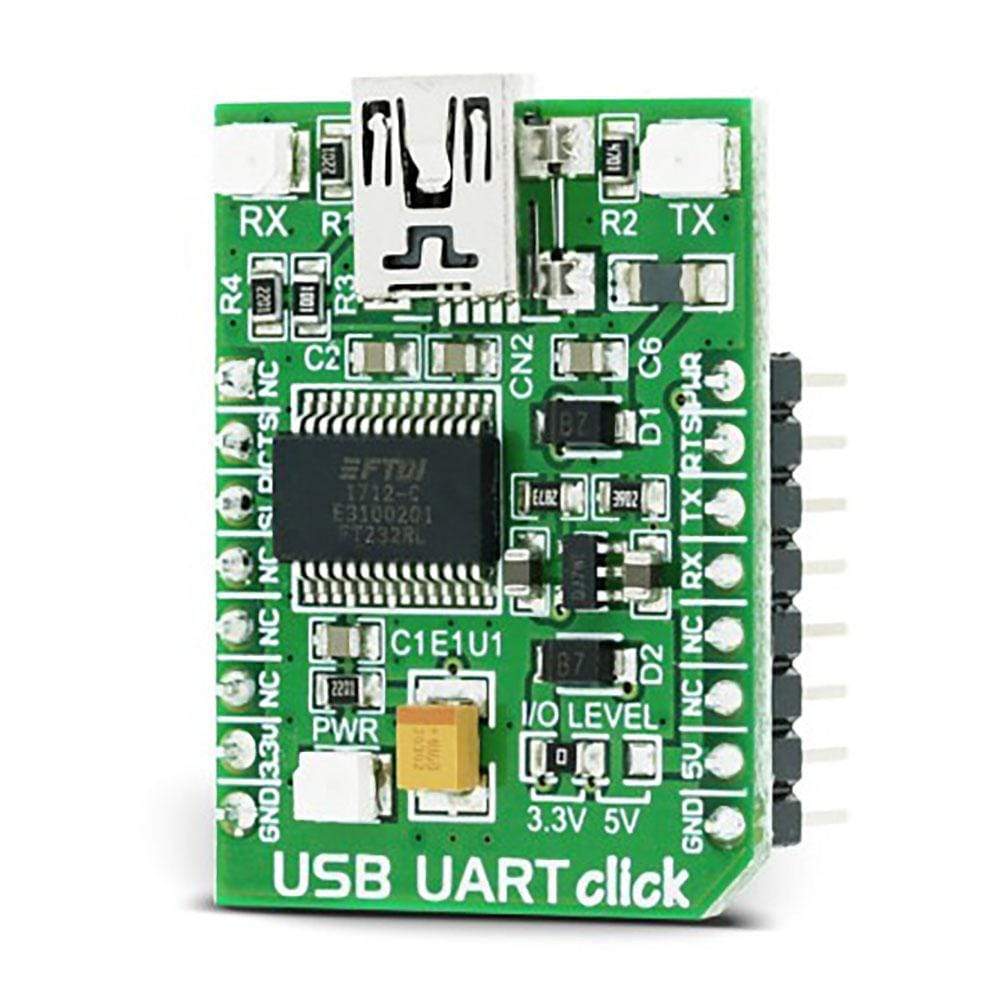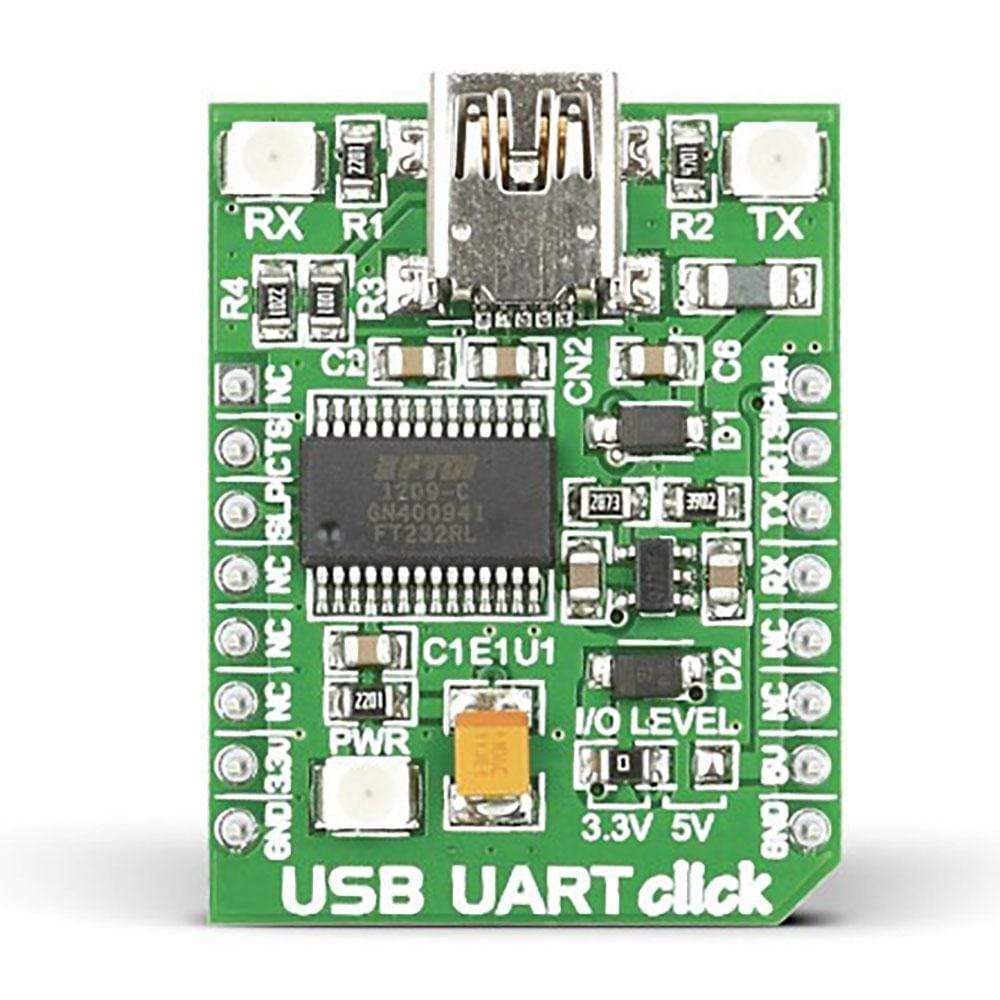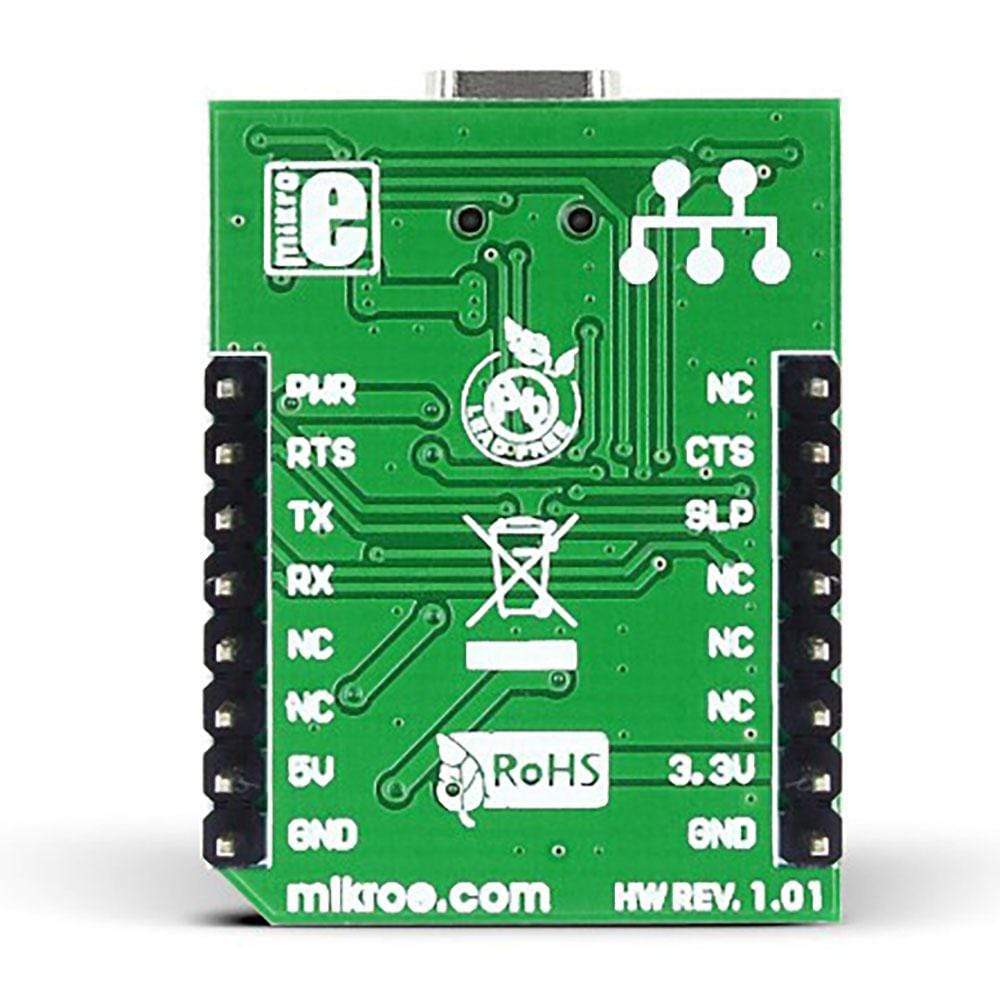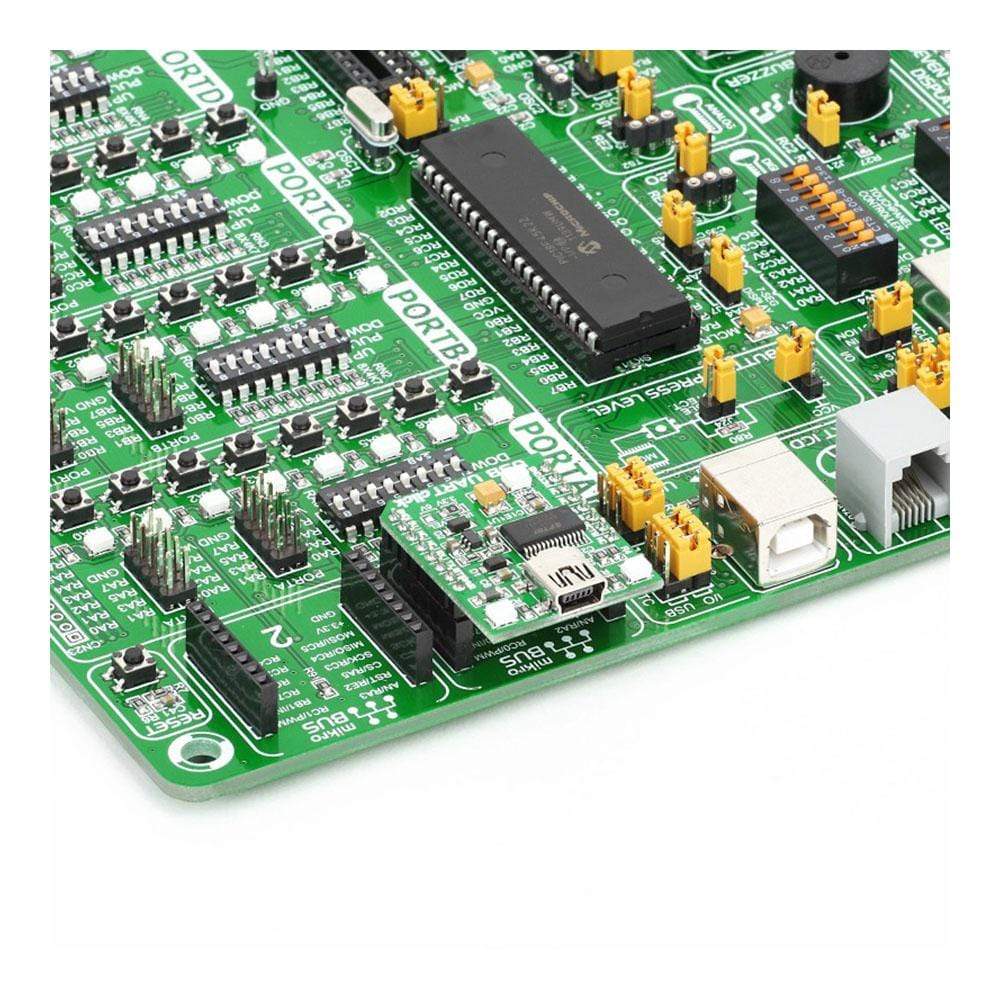



Overview
The USB UART Click Board™ offers a USB to asynchronous serial data (UART) interface, allowing the microcontroller-based designs to communicate with the personal computer, in a very simple way. It is equipped with the FT232RL, a very popular USB to UART interface IC, used on many MikroElektronika devices - both for its reliability and simplicity.
The USB UART Click Board™ is used whenever there is a need for seamless and effortless interfacing of the UART lines to a personal computer. It can be used with any UART terminal, like the one found in MikroElektronika compilers.
Downloads
La carte USB UART Click Board™ offre une interface USB vers données série asynchrones (UART), permettant aux conceptions basées sur un microcontrôleur de communiquer avec l'ordinateur personnel, de manière très simple. Elle est équipée du FT232RL, un circuit intégré d'interface USB vers UART très populaire, utilisé sur de nombreux appareils MikroElektronika - à la fois pour sa fiabilité et sa simplicité.
La carte USB UART Click Board™ est utilisé chaque fois qu'il est nécessaire d'interfaçage transparent et sans effort des lignes UART avec un ordinateur personnel. Il peut être utilisé avec n'importe quel terminal UART, comme celui que l'on trouve dans les compilateurs MikroElektronika.
| General Information | |
|---|---|
Part Number (SKU) |
MIKROE-1203
|
Manufacturer |
|
| Physical and Mechanical | |
Weight |
0.032 kg
|
| Other | |
Country of Origin |
|
HS Code Customs Tariff code
|
|
EAN |
8606015073972
|
Warranty |
|
Frequently Asked Questions
Have a Question?
Be the first to ask a question about this.




